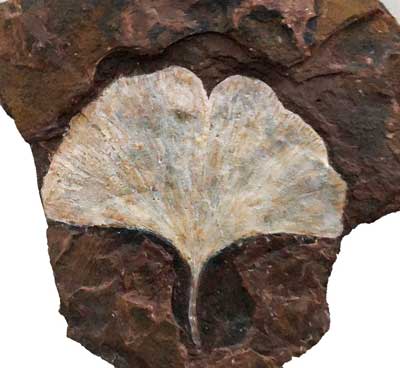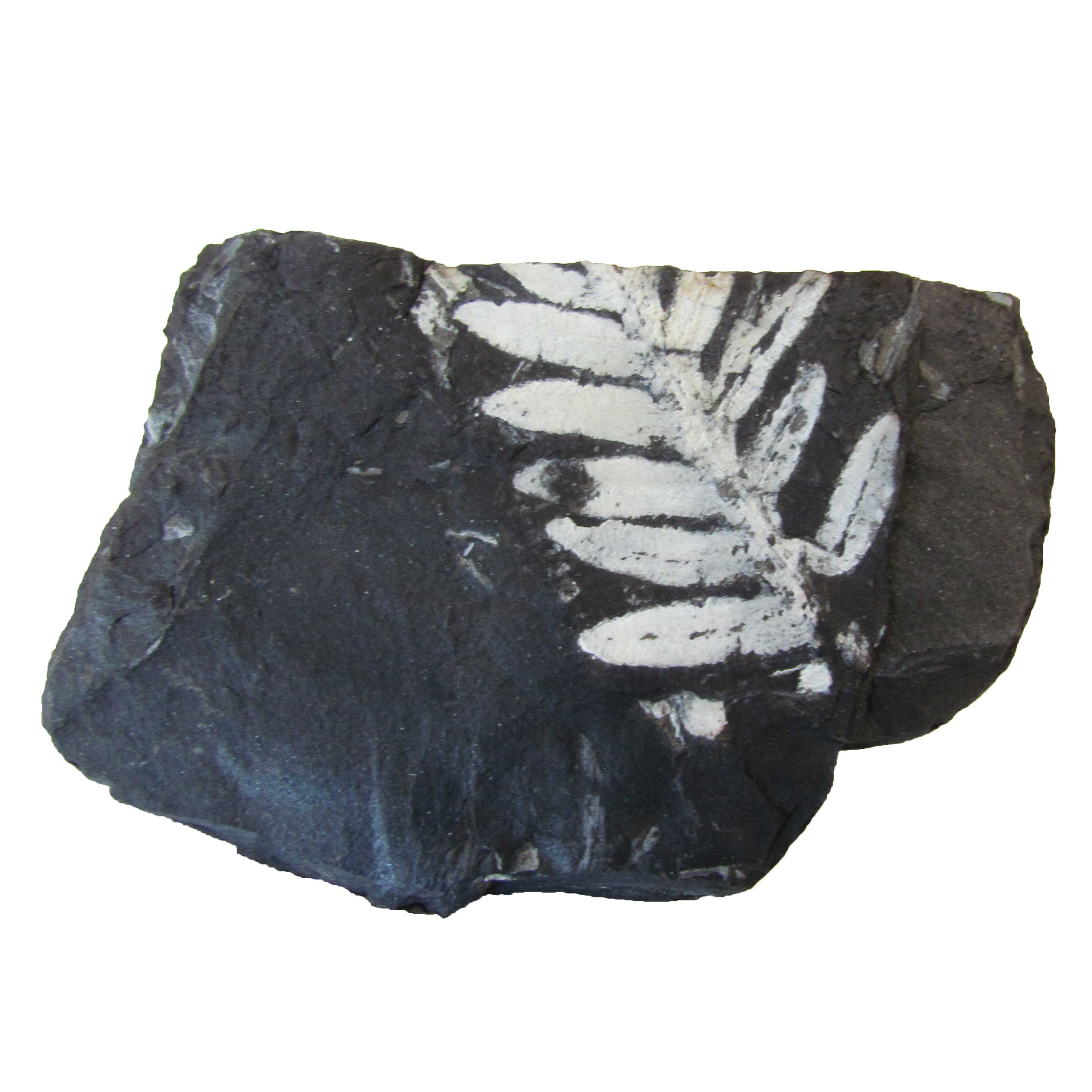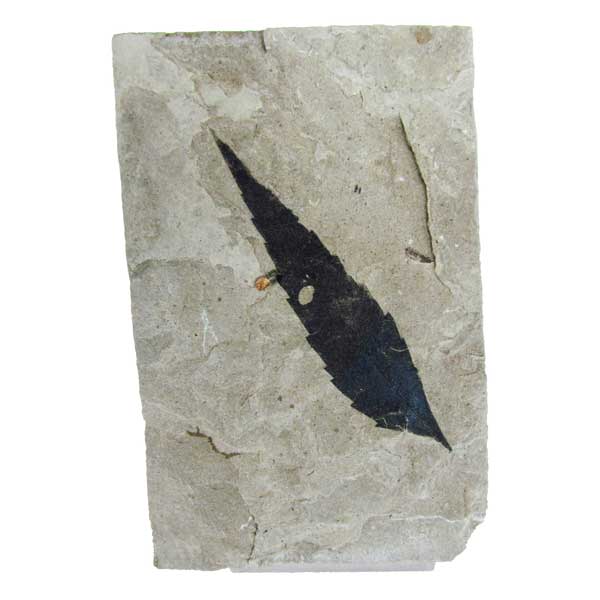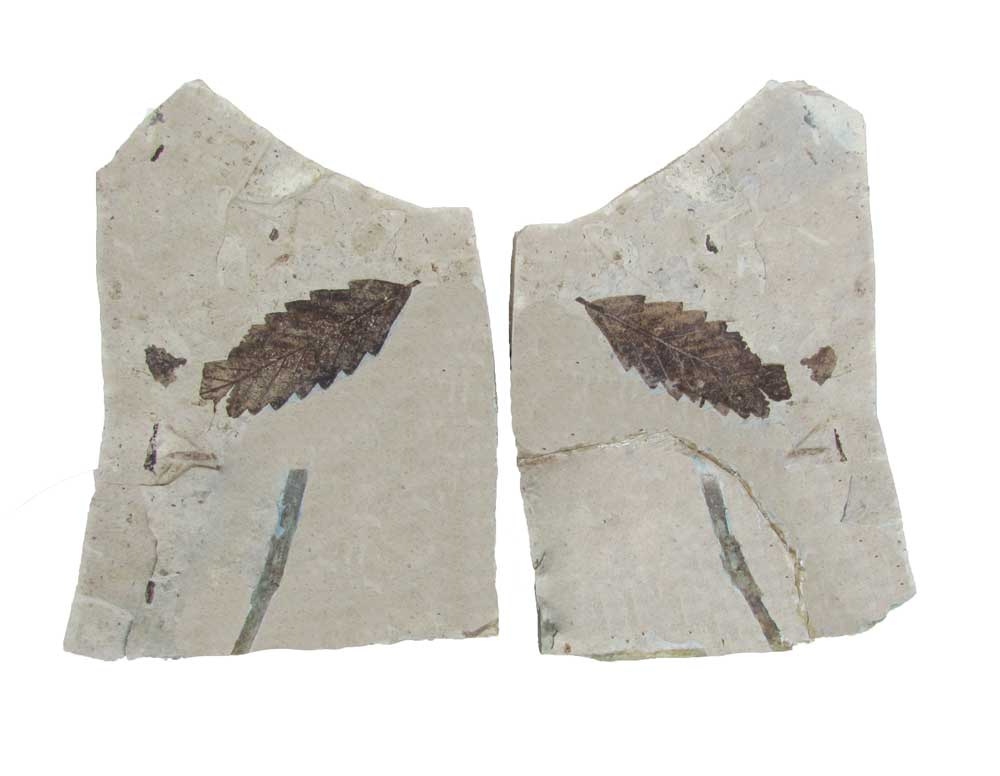Sign up for Lesson Plans, discounts & more!
Plant Fossils
Plant fossils are rare compared to fossils of bones, teeth, and shells. The soft tissues of leaves are usually destroyed long before fossilization can take place. Only when conditions are just right can leaves be preserved. The Goldielocks conditions needed are pretty simple. In order to fossilize, the freshly fallen leaf needs an undisturbed place with little or no oxygen. It could be buried in a landslide or fall to the bottom of a deep lake.

Still there are many great fossil sites in the world that have excellent preservation of plant materials. While these seems to contradict the statement above We have to keep in mind the billions of plants that have lived on earth through the ages. The world is a big place and has created many goldilocks situations, from the swampy bogs of the Carboniferous Period to the deep lakes that created the Green River Formation During the Eocene Epoch.
Petrified wood on the other hand is pretty common and found in many locations throughout North America and the world.It takes a long time for wood to break down. If it takes a few years to be buried it will still fossilize.
So lets look at some of the places that are home to great plant fossil sites.

Plant Fossils of The Carboniferous Period
Fern Fossils of Schuylkill county Pennsylvania
The Carboniferous Period created lots of good plant fossils. Why was that? Well the hot and wet conditions that prevailed during this time was really good for plant growth often in swampy areas. There was an abundance of ferns some of them tree sized. For millions of years these ferns lived out their life cycle, died and fell into the watery bogs. New ferns grew up forming layer upon layer of dead plant material. Remembering the Goldielocks conditions you may ask, “What about the need for a place with little or no oxygen?” There was more oxygen in the Carboniferous Period than perhaps any other time on earth! Also swamps tend to be shallow, not deep enough to have oxygen depleted zones. You would be right on both points. There was another condition that existed then and only then.
In terms of evolution these huge fern forests were kind of a new thing. The bacteria that breaks down plant matter today had not evolved yet. Nothing consumed all of that dead plant material. It just kept piling up. Eventually the weight of it all squeezed and compressed layers underneath and it turned to coal. Coal is fossilized carbon and many coal deposits also have exquisite fern fossils embedded in them. A good example of this are the many species of fern fossils found in Schuylkill county Pennsylvania. They are very detailed and often have a white mineral coating called pyrophyllite making the fossil stand out against the black coal shale.

Plant Fossils of The Green River Formation
The Green River Formation
The Green River formation was a huge, ancient rock formation, spanning mountainous lake basins, consisting of layers of fine grained sedimentary rock. The original formation occurred about 59-33 million years ago, and is near present-day Green River, which covers parts of Utah, Wyoming and Colorado. This formation was truly monumental in size. Below is a map of the general area where these lakes were. The lakes were huge! And with them came an abundance of life. All kinds of tropical and sub-tropical plants surrounded the lakes which were very deep. There was very little oxygen at the bottom of these deep lakes making ideal conditions for making fossils!
There have been over 300 species of plant fossils found in the Green River Formation! In addition to these plant fossils, insects, crustaceans, and 60+ kinds of vertebrate fossils have been found within the layers of this formation.
Green River Plant Fossils For Sale
Plant Fossils of Florissant

Florissant
The Florissant fossil beds near Colorado Springs, Colorado are a world class fossil area. It was created during the late Eocene and into the early Oligocene Epochs around 34 million years ago. The Rocky Mountains had already formed during the Laramide orogeny between 80 and 55 million years ago. Florissant was a deep valley with volcanic activity nearby.
The valley was damed by pyroclastic flows and the valley became a lake. The lake filled with sediments and ash and lush forests grew up in the valley only to be covered by volcanic mudflows. A second volcanic low again damed the valley forming a second lake. This lake was filled with sediment and debris which was covered by a large ash and pumice volcanic flow. In the middle of this layer cake of volcanic ash, sediments, and more volcanics, are the layers containing the florissant fossil beds. They are from the forest that grew on the sediments of the first lake. The National Monument at Florissant has the petrified remnants of the trees many still standing upright! It also has a huge collection of leaves, flowers, and insects that grew in the forest.
Check out some of the Educational Materials for sale on our sister site fossilicious.com.

interested in more? If so, you may want to check out our other sites:
fossilicious.com - Our online fossil and mineral rock shop.
rocksandminerals4u.com - An educational site about rocks, minerals, and geology.
Geologic Time Geologic Time Line
Cenozoic Era
Quaternary
Neogene
Paleogene
Mesozoic Era
Cretaceous
Jurassic
Triassic
Paleozoic Era
Permian
Carboniferous
Devonian
Silurian
Ordovician
Cambrian
Archean Time
Hadean Time
Teachers Resources
Activities for Education and Fun
Earth Science Lesson Plans
Activities For Kids
Fossil Lesson Plans
Fossil Activities
Education Articles
Coloring Pages
Dinosaur Coloring Pages
Montessori Materials
Geology Club
Fossil Hunting
 |
 |
 |




